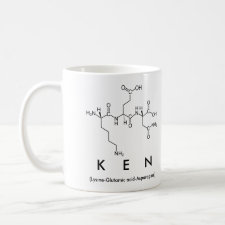
Authors: Wu XY, Goswami K, Shimizu KD
Article Title: Comparison of monofunctional and multifunctional monomers in phosphate binding molecularly imprinted polymers.
Publication date: 2008
Journal: Journal of Molecular Recognition
Volume: 21
Issue: (6)
Page numbers: 410-418.
DOI: 10.1002/jmr.912
Abstract: In this study, molecularly imprinted polymers (MIPs) prepared using a multifunctional and a monofunctional monomer were compared with respect to their affinities, selectivities, and imprinting efficiencies for organophosphates. This is of interest because multifunctional monomers have higher affinities than traditional monofunctional monomers for their target analytes and thus should yield MIPs with higher affinities and selectivities. However, polymers containing multifunctional monomer may also have a higher number of unselective, non-templated binding sites. This increase in background binding sites could lead to a decrease in the magnitude of the imprinting effect and in the selectivity of the MIP. Therefore, phosphate selective imprinted and non-imprinted polymers (NIPs) were prepared using a novel multifunctional triurea monomer. The binding properties of these polymers were compared with polymers prepared using a monofunctional monourea monomer. The binding affinities and selectivities of the monomers, imprinted polymers, and NIPs were characterized by NMR titration, binding uptake studies, and binding isotherms. MIPs prepared with the triurea monomer showed higher binding affinity and selectivity for the diphenylphosphate anion in organic solvents than the MIPs prepared with the monofunctional monomer. Surprisingly, the binding properties of the NIPs revealed that the polymers prepared using the multifunctional and monofunctional monomers were very similar in affinity and selectivity. Thus, the multifunctional monomers increase not only the affinity of the MIP but also enhance the imprinting effect. Copyright © 2008 John Wiley & Sons, Ltd
Template and target information: organophosphates, TPP, DPP, TBA-DPP, TPO, triphenyl phosphate, diphenyl phosphate, tetrabutylammonium diphenyl phosphate, triphenyl phosphine oxide
Author keywords: molecularly imprinted polymer, phosphate, urea, hydrogen bond, binding isotherm



Join the Society for Molecular Imprinting

New items RSS feed
Sign-up for e-mail updates:
Choose between receiving an occasional newsletter or more frequent e-mail alerts.
Click here to go to the sign-up page.
Is your name elemental or peptidic? Enter your name and find out by clicking either of the buttons below!
Other products you may like:
 MIPdatabase
MIPdatabase









